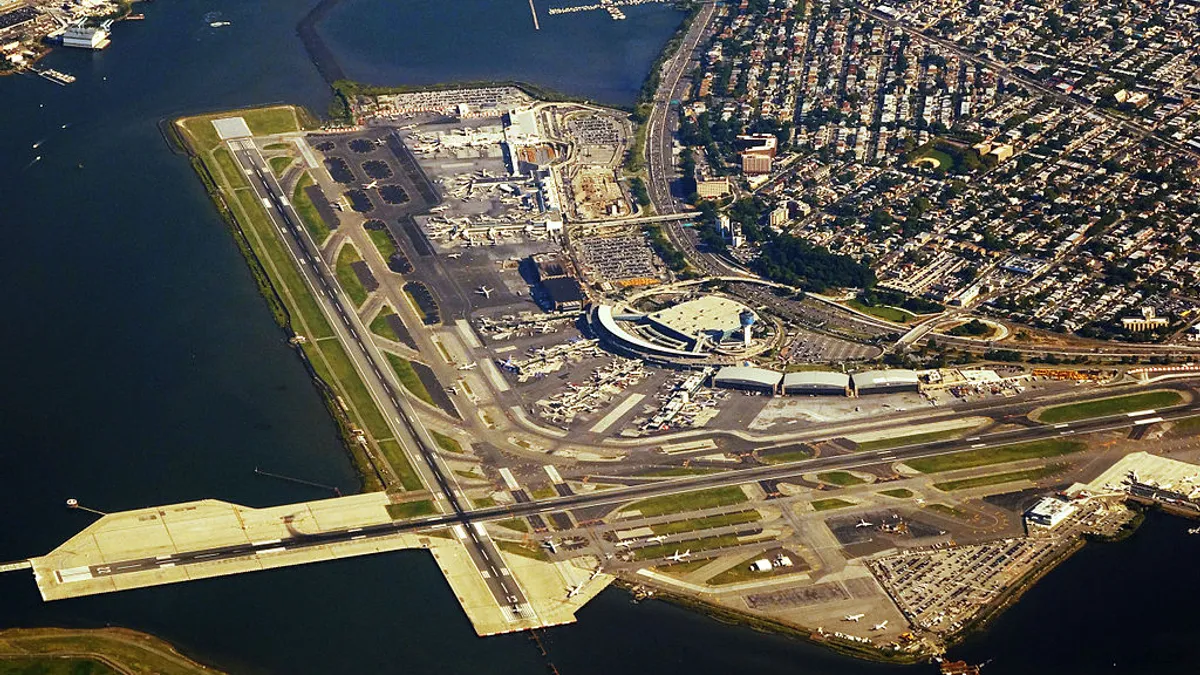Dive Brief:
- New York Gov. Andrew Cuomo and Vice President Joe Biden ushered in the construction phase of New York City's new $4 billion LaGuardia Airport terminal with a Tuesday groundbreaking ceremony, the first step in getting rid of an airport that Vice President Joe Biden once characterized as "third world," the New York Business Journal reported.
- The new 1.3 million-square foot, 35-gate Terminal B will open in phases from 2018 to 2021, and in addition to planned ferry and rail connections to the Long Island Railroad, a new bus service called "LaGuardia link" will connect passengers with the New York City subway.
- The old LaGuardia terminal, which Cuomo called "outdated, overcrowded and unworthy of the Empire State," will remain in operation during Terminal B construction.
Dive Insight:
Delta Airlines, which operates the airport's other two main terminals, is expected to rebuild those as well, after which they will be connected to the new Terminal B, according to the Business Journal. During the groundbreaking ceremony, Cuomo said Biden's harsh words about the current terminal helped drive the massive overhaul.
The LaGuardia project is reportedly the largest public-private partnership (P3) in the country, and general contractor Skanska, which leads the private component of the P3, LaGuardia Gateway Partners (LGP), has said it is the company's largest project ever. Earlier this month, LGP announced that it had finalized finance, design, construction, operation and maintenance details with the Port of New York and New Jersey.
In March, Port Authority officials announced that total project costs were actually $5.3 billion if they included previously unbooked development costs. This followed a February announcement that cost increases had boosted the project's price tag from $3.6 billion to $4.2 billion as a result of a central hall addition, which was left out of the original bid.
The LaGuardia Terminal B project is just one recent example of public entities choosing to harness the financing power — as well as the design, construction and operational expertise — of the private sector through the P3 structure. In fact, Skanska has another large-scale P3 underway in Florida, a $2.3 billion renovation of a 21-mile section of Interstate 4 in Orlando, FL. Another high-profile P3 is the $3.3 billion Purple Line light rail project in Maryland. A Fluor Enterprises-led joint venture, Purple Line Transit Partners, will finance, design, build, operate and maintain the 16.2-mile rail system for the state.














